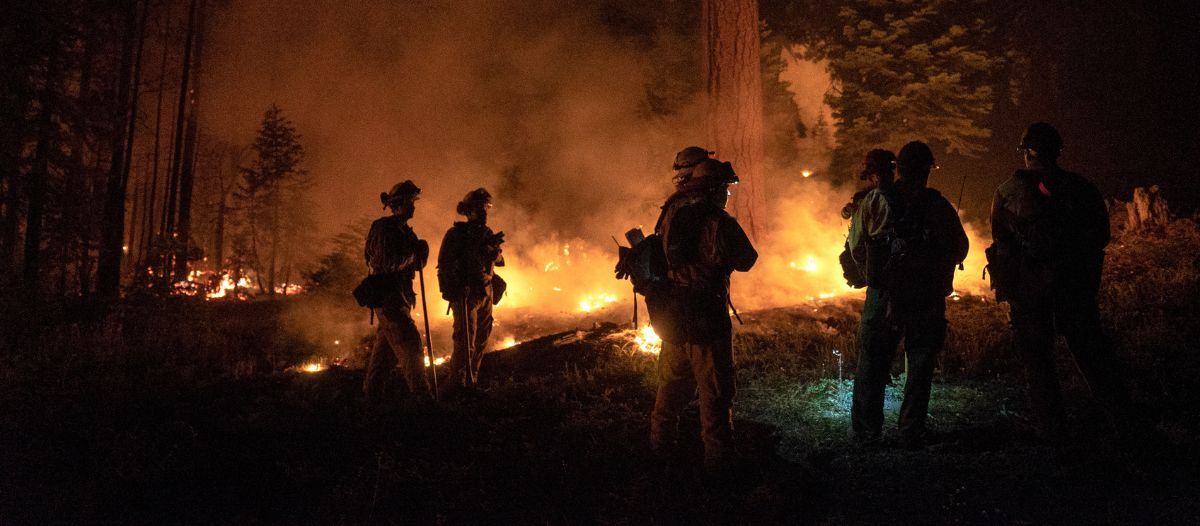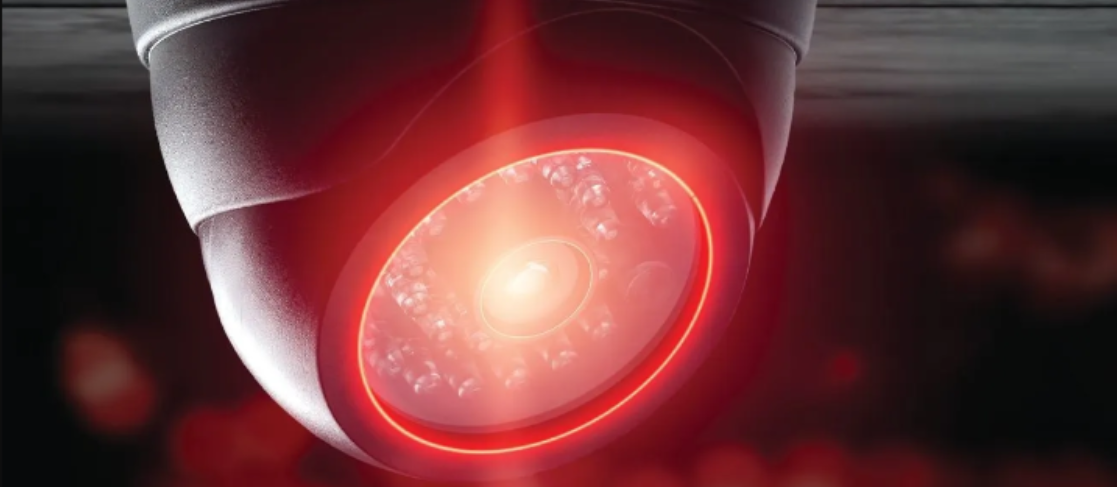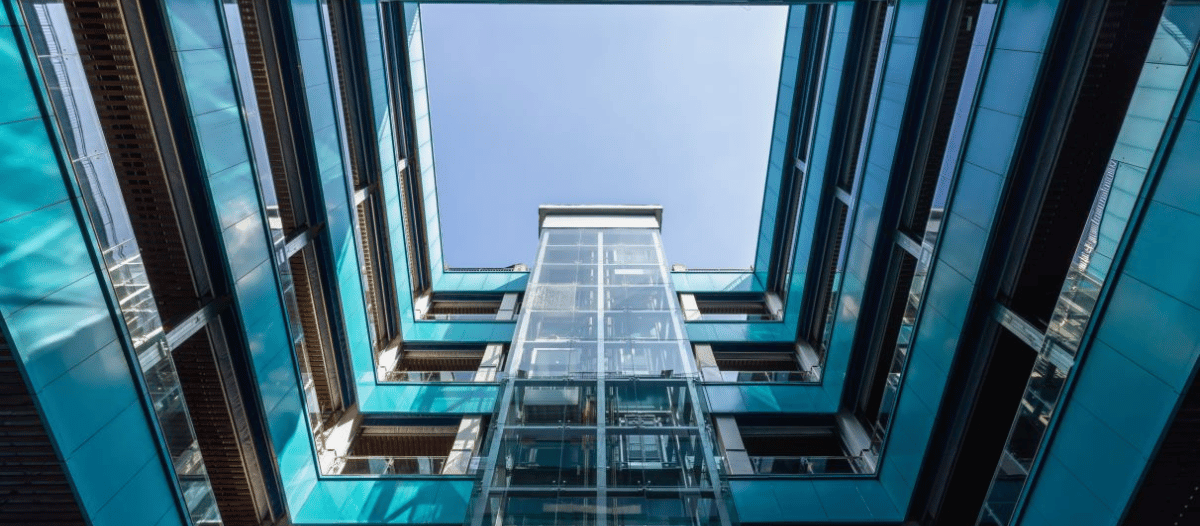When Minutes Matter
SHM in an era of escalating wildfire risk

Recent global wildfires place structural resilience to the ultimate test. As facilities face unprecedented resilience challenges, buildings and other structures equipped with structural health monitoring (SHM) technology demonstrated remarkable advantages in early threat detection and response.
SHM sensor networks monitor structural integrity to enable corrective maintenance well before disaster strikes, allowing facility managers to identify and repair structural damages, at times, months in advance. When the event occurs, the property is more resilient and therefore better able to handle it.
Moreover, the real-time 24/7 data during and immediately after the fire – the same benefits apply to other natural, structural or man-made disasters – not only minimize or avoid costly secondary damages but also allow building owners and FMs to monitor the structure right away and know whether it is safe to occupy.
If repairs are needed, the data facilitates identifying where to focus on the property, so they can be done quickly and at less cost in capital, insurance exposure and business interruption.
With global wildfire activity projected to increase 30-50 percent in the coming decades, and the fire season now extended to the entire year, the question is not whether to implement SHM. It is how quickly these systems can be deployed in as many properties and infrastructure as humanly possible before the next disaster season arrives.
While climate change now leads to or worsens fires all year, wildfires peak from June to September. Environment Canada reported that in that country alone, fires burned nine times more area than the 2001-22 average. During the 2023-24 iteration, according to a Global Carbon Project report, wildfire emissions jumped 16 percent above the 2003-22 average.
This trend is not an anomaly. It is the new normal. The geographical area that has burned around the world has increased an astonishing 30 percent since 2000, according to a 2024 paper in Nature Climate Science. The NASA Wildfire Monitoring Program reported that in 2024, extreme fires exceeding historical intensity thresholds doubled in frequency since 2003.
Each 1 C rise in global temperature, according to the World Meteorological Organization, will elevate lightning strikes by 12 percent, igniting fires in forests that are drying more from the growing heat. It should come as no surprise, therefore, that end-of-century scenarios project a 50-70 percent increase in the global burned area.
Compelling data
From the SHM perspective, wildfires in California, for example, could have been so much worse. State law incentivizes the installation of SHM, which has allowed an opportunity to see the systems at work during the fires:
-
Air quality sensors detected smoke infiltration 60 minutes before visible signs.
-
Thermal monitoring identified high-risk zones for ember ignition.
-
Real-time data enabled precise evacuation routing and resource deployment.
The result? SHM-equipped buildings experienced 72 percent fewer fire-related electrical failures and enabled FMs to detect risks up to 72 hours before traditional methods, according to the Bay Area Council Economic Institute. Indoor air quality was kept below World Health Organization hazard thresholds, despite external PM2.5 levels exceeding 300 μg/m³. SHM technology also reduced evacuation response times by 41 percent, according to the California Insurance Commission.
On the financial side, these and other data confirm what FMs see firsthand every day in SHM installations around the world. Buildings equipped with SHM systems deliver 55 percent lower reconstruction costs and reduce insurance claims processing time by 64 percent. A rapid return on investment (ROI) has been observed, thanks to:
-
Insurance premium reductions running approximately 15-30 percent, as per AXA XL Digital Risk Engineer Platform. That roughly mirrors the premium discount mandated by the 2024 California law, for properties implementing state-approved mitigation measures such as SHM.
-
Avoided emergency repair costs, as preventive or prescriptive maintenance becomes four times less expensive.
-
Avoided business interruption and, where an interruption is inevitable, accelerated resumption – 34 days faster on average, according to IFMA’s Disaster Recovery Study of 2024.
-
Faster, easier documentation for claims and compliance, thanks to the real-time data provided by the system.
-
An SHM-as-a-service subscription alternative that reduces or eliminates the need for an upfront investment and folds the system in the property’s regular maintenance budget.
-
In the Fort McMurray rebuild project following a 2016 Canada wildfire, SHM integration across 5,200 properties reduced maximum probable losses from CA$40 billion to CA$9.6 billion.
How does SHM technology work?
How can FMs be assured that a building structure is operating within safe parameters? SHM provides continuous data about the changes taking place in an instrumented building, which helps with its safety and longevity, while reducing costly maintenance fees for surprise problems that worsen before they are discovered. In essence, a structure such as a building, mall, bridge or power plant can be instrumented with sensors in appropriate locations within the property, and the recorded data can continuously be analyzed to provide information about its structural health.
After a natural disaster of any kind – such as earthquakes, fires, tornados, tsunamis, hurricanes, floods or coastal erosion and water filtration from sea-level rise – occupants of a building need to know if their building is safe. The same applies to structural disasters, such as a collapsing roof or building subsidence. Implementing an SHM solution should benefit both the occupants and the owner of the building, providing confidence that the building is continuously being monitored and that necessary notifications should provide an early alert detecting changes to the behavior of the building.
FMs can receive notifications and reports that are easily understandable, followed by immediate notification enabling occupants to follow predefined action plans. The system also helps to avoid unnecessary evacuations and their associated costs. Prior to a disaster, real-time data from SHM helps an FM detect any structural flaw when it happens, allowing for less-costly prompt repairs versus the higher-cost repairs when a fault goes unnoticed until it worsens and becomes a bigger challenge.
Other types of sensors, such as tilt meters when appropriate, can be integrated optionally within the system to more accurately detect slow moving changes such as deflection and settlement. Additionally, all the continuously recorded raw and calculated data (using well-established structural dynamics and state-of-the-art damage assessment) can be made available to an expert engineer to perform further specific analysis as may be needed.
As an example, the following are the key indicators that can be monitored:
1. Acceleration (dynamic response)
-
Measured using accelerometers at strategic locations.
-
Indicates extent of vibrations and forces due to wind, seismic events, and operational loads or impacts.
-
Long-term monitoring helps identify resonance, structural changes or fatigue.
2. Velocity (structural damping & energy dissipation)
-
Derived from acceleration.
-
Provides insight into how much energy is dissipated by the structure.
-
Help assess damping performance of the building and vibration dose.
3. Displacement (deflection & drift)
-
Derived from acceleration, captures positional changes under dynamic and static loads.
-
Large displacements may indicate excessive flexibility or potential instability.
-
Long-term monitoring can detect progressive deformation or settlement.
4. Inter-story drift ratio (relative movement between floors)
-
Calculated using derived displacements and building/floor shape and dimensions.
-
A crucial metric for earthquake and wind loading effects and consequences.
-
High inter-story drift ratio can indicate potential structural failure or nonstructural damage.
5. Frequency content
-
Measured using Fourier transform of (mainly) acceleration data.
-
Helps identify natural frequencies of the structure or sensor locations.
-
A shift in frequency over time may indicate stiffness degradation, cracks or material fatigue.
6. Structural response spectrum
-
Analyzes how the building responds to external forces (e.g., earthquakes, windstorms).
-
Helps assess whether the building remains within design safety limits or within building codes.
7. Tilt, rotation & overturning
-
Monitored using tilt meters at strategic locations.
-
Sudden or progressive tilting may indicate foundation settlement, uneven loading, structural deformations or overturning.
-
Important for assessing long-term stability and serviceability.
8. Weather influence
-
Captures wind speed and direction as well as temperature at top or at multiple heights.
-
Correlates weather influences with other monitored parameters.
-
Helps identify influence of ambient conditions on structural status.
Lead the change
Given all the above, FMs have a unique opportunity to drive the adoption of SHM-friendly policies and best practices in their respective regions, wherever they live and do business.
That is because SHM implementation is not just about protecting individual buildings. It is about building greater resilience in the communities where people live and work, so they can be better prepared for the fires and other extreme-weather challenges that lie ahead.
For FMs, the message is clear: SHM technology transforms wildfire defense from reactive to proactive. With systems detecting threats earlier than traditional methods and cutting post-fire reconstruction costs by more than half, SHM technology becomes a clear no-brainer and represents a critical and life-saving investment in organizational resilience.

Wanda Archilla is a seasoned facility manager and architect with more than 20 years of experience in implementing facilities cost reduction initiatives across the pharmaceutical, manufacturing and construction industries. She is skilled in strategic planning and maintenance procedures for complex campus facilities and proficient in structural health monitoring systems and their benefits. Archilla has extensive experience in all phases of design and construction projects and is adept at managing multiple projects and deadlines in a challenging environment. She also has a deep understanding of Lean Six Sigma tools and processes.
Read more on Risk Management or related topics Facility Technology , Facility Resilience and Emergency preparedness, response and recovery
Explore All FMJ Topics









